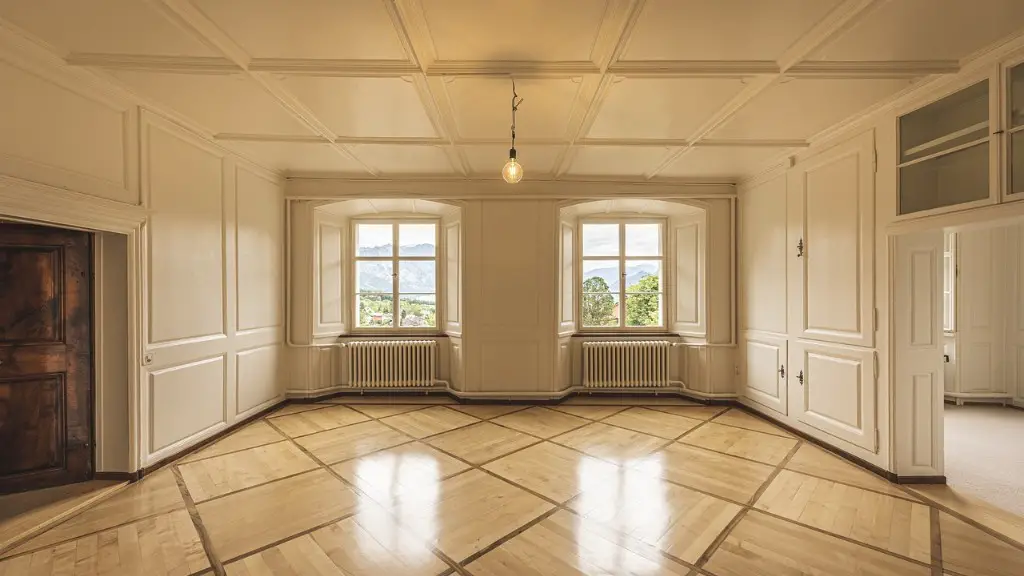Introduction
Identifying Australian architecture is an important skill in understanding the history and culture of the country. Australia has a rich history and many distinctive architectural styles that have shaped the urban landscape. This pictorial guide is an attempt to help people identify and understand the features of Australian architecture. From the Colonial and Federation eras to modern contemporary designs, this guide will provide the reader with an overview of the many different architectural styles found in Australia.
Colonial Architecture
The first wave of European settlers in Australia brought with them their own architectural styles, which helped define the landscape of the newly settled country. Colonial architecture is one of the most iconic representations of Australian architecture. It is characterised by a distinctive amalgamation of Georgian and Victorian styles, with tall arched windows, brickwork, and ornate pediments. A typical feature of colonial architecture is the symmetrical placement of windows and doors, giving a sense of grandeur and stability.
Federation Architecture
Federation architecture, commonly known as Federation style, is a style of construction that emerged during Australia’s Federation period (1890-1914). Federation architecture was heavily influenced by the Victorian and Edwardian styles and is characterised by the use of ornate details such as patterned brickwork and terracotta tiles which are often seen on the roof and along the building’s façade. Common elements found in this style include steeply pitched gabled roofs, decorative timber fretwork, stained glass and decorative window hoods.
Modern Australian Architecture
Modern Australian architecture has been heavily influenced by the International Style. This style is characterised by its emphasis on functionality, minimalism and clean lines. Many modern buildings are constructed from glass, steel and concrete and often utilise cutting edge design techniques to create striking structures. Structures that showcase modern Australian architecture include the Sydney Opera House, the Federation Square complex in Melbourne and the Q1 tower in Surfers Paradise.
Sustainable Architecture
Sustainable architecture is a relatively new development in Australia, with many architects and engineers striving to make the country more sustainable by utilising renewable energy sources, building with materials that are energy efficient and recyclable, and designing structures that reduce energy consumption. A great example of this is the One Central Park complex in Sydney which features an array of innovative design features such as a vertical garden, an adjustable shading system, and an integrated solar panel system to provide sustainable energy.
Mid-Century Modern
Mid-century modern architecture is a style of design that emerged in the 1950s and 1960s. It is characterised by its use of contemporary materials such as PVC, plastic and steel, and its emphasis on an open plan. Buildings that showcase this style often have large windows that allow natural light to flood the interior, creating an airy and spacious feel. Notable mid-century modern buildings in Australia include the Sydney Opera House and the Q1 tower in Surfers Paradise.
Regional Architecture
Regionally specific architecture is often used in Australia to reflect the culture and values of a particular region. Notable regional styles include the Queenslander style that is often found in Brisbane, the Art Deco style which is common in Sydney, and the Mediterranean style which is popular in Melbourne. Many of these regional buildings utilise local materials such as timber and limestone, and many have been built with an emphasis on sustainability.
Organic Architecture
Organic architecture is a style of design that is heavily focused on its environment. This style emphasises the use of natural materials and a connection to the outdoors. Buildings built in this style often take on an organic, curved shape and are designed to blend in with the surrounding environment. A great example of this type of architecture is the Ecosciences Precinct in Brisbane, which was designed by renowned architect Frank Gehry.
Postmodern Architecture
Postmodern architecture is a style of design that emerged in the late 20th century and is characterised by its use of bright, bold colours and shapes. This style seeks to break away from the traditional notions of design, often utilising traditional features such as columns and arches in an unexpected and playful way. Notable postmodern buildings in Australia include the MCA in Sydney and the State Library of Victoria in Melbourne.
Conclusion
This pictorial guide to identifying Australian architecture has provided an overview of the many distinctive styles found in Australia. From colonial, to federation, to modern and beyond, this guide has shown that Australia’s architecture is varied and diverse. It is hoped that this guide will help readers gain a better understanding of the architectural styles that are found in the country and appreciate the many different ways in which architecture shapes our culture and environment.


